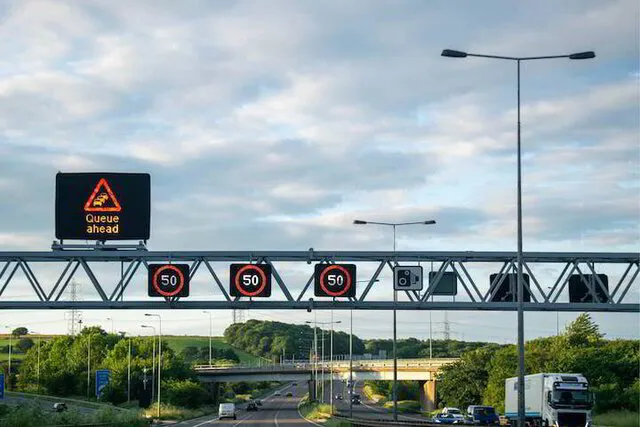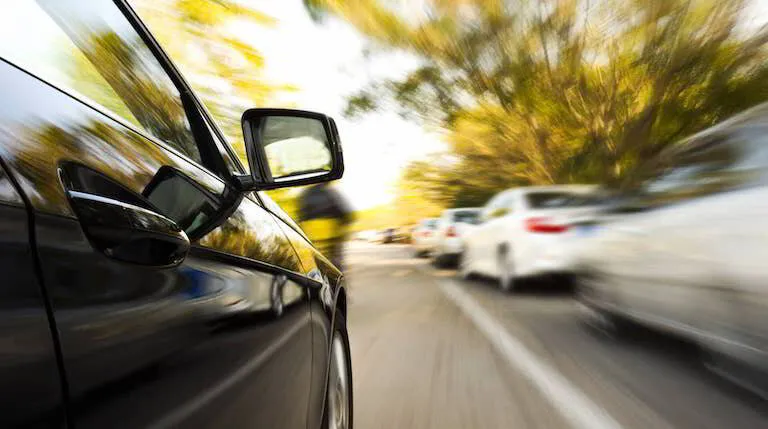SPEED LIMIT SIGNS – WHAT YOU NEED TO KNOW
Perhaps the most important & obvious point to make is that speed limit signs must be clearly visible. What if they are not visible?
Case One
Recently, a driver won an appeal against a conviction for speeding six times on the same road in just 11 days – because bushes obscured the 50mph signs. Keith Peace was a courier driver living in Barnsley but then got a job delivering milk to North Wales schools.
He had to set off in the early hours travelling regularly along Sealand Road where he only saw average speed signs. There were no houses where he was caught, no lighting & he thought it was a 60mph limit.
He was convicted of 5 speeding offences in the Magistrates Court but his appeal to the Crown Court was uncontested after he produced pictures showing plants in the way of the signs on Sealand Road as it leaves Chester. For reasons unknown, the prosecution dropped one speeding case at the Magistrates Court where the case was originally listed for Hearings which Mr Peace had not attended. At the Magistrates Court he was banned for 6 months under the totting up procedure.
Mr Peace gave evidence at Mold Crown Court that he knew the road was covered by average speed cameras but believed it was a 60mph zone & that he would have stuck to the 50mph limit had he been able to see the signs. He produced photographs showing the signs to be obscured & on that basis the prosecution did not oppose his appeal. This meant that the local authority had failed to comply with the relevant Regulations governing speed limit signs. He was acquitted & his driving ban rescinded.
The Judge said there were signs along the road, and it was important the authorities made sure they were monitored and complied with the law.
This is an important point. Many speed limit signs, even in urban areas, are situated on grassed areas often with hedging, bushes or trees growing alongside & over them. If you are caught speeding where foliage obscures the sign or signs you should have seen then, it is vital that you return to the scene & take photographs to back up your case.
Case Two
In 2006 the High Court intervened when Judges threw out a conviction after hearing how the driver’s view of the speed-limit sign was obscured by an overgrown hedge. This is something to always consider if you genuinely had no idea a speed limit had changed because you could not see the sign or signs. Bear in mind, however, that if other signs were visible you may find it difficult to explain why you did not see them.
John Coombes was furious when he was found guilty and fined for speeding in a 30mph zone because he maintained that an overgrown hedge meant he could not see a roadside signpost warning of the restriction.
His conviction was quashed by two senior High Court judges in London who ruled that, because of an obscured sign, he had not had sufficient warning that he was passing from a 40mph zone into a 3Omph area. It was also ordered that his legal costs - set to top many tens of thousands of pounds - should be reimbursed from public funds.
Mr Coombes was caught in a police speed trap when he exceeded 30mph on the B3139 Bath Road while driving home from work at about 5pm. He was convicted of speeding by Mendip Magistrates. At Bristol Crown Court, both his conviction and fine were upheld by a 2-1 majority decision.
He said he had been driving home in bright sunshine and the overgrown hedges at the side of the road meant he did not see any roadside signs. Haze from the sunlight also meant he did not see two 30mph roundels painted on the road's surface. Judges in the High Court were shown photographs that revealed it was impossible to see the nearside sign when driving from the 40mph stretch of road into the 30mph zone.
The Director of Public Prosecutions opposed the appeal arguing that the conviction was correct because the signs themselves - even though one was admittedly obscured - were perfectly valid under the 1984 Act. Their argument was that only one sign had to be seen for there to be a lawful speeding conviction.
The High Court rejected the DPP's argument.
The Judges ruled that the Crown Court had found that, if Mr Coombes had been approaching the 30mph zone at 40mph and not had local knowledge, he would not have had time to reduce his speed below 30mph.
Mr Coombes said at the recent hearing that the overgrown hedgerow had obscured not only the speed limit signpost but also other signs, including one warning drivers of a school ahead.
What rules do local authorities have to observe regarding speed limit signs?
Speed limit signs must comply with various Regulations specifying
- their size
- their type
- their colour
and these differ depending on the speed limit. It is the responsibility of the relevant local authority to erect signs in appropriate places, ensure that they comply with all the above Regulations including illuminating them where that is required. The current edition of these Regulations came into force in 2016 revoking the previous version issued in 2002. All editions prior to 2016 were clear & strict about where speed limit signs must (or must not) be installed so that you could rely on any failure to comply with the Regulations as a defence to a speeding charge.
The 2016 regulations are much less helpful to drivers because they contain very few absolute requirements about the placing of speed signs & where they are used. Instead, local authorities have been given much more flexibility about whether & where signs are used. This is not good news for drivers because speed limit signing could become confusing & may significantly vary from one local authority to another. This makes it more likely that drivers will become confused & inadvertently exceed speed limits. Defending a case in that situation would not be easy because the Regulations are now incredibly vague about what is “requisite.”
Placing of speed limit signs
All editions of the Regulations prior to 2016 contained strict rules on where speed limits had to be placed. These included
- at the start of any speed limit, there needed to be a pair of signs (‘terminal’ signs), one either side of the road, as close as possible to the point where the limit started
- at the junction of two roads, if the speed limit on one was different from that on the other, only a single sign was required, but it had to be on the nearside as seen by a driver
- speed limit repeater signs had to be placed throughout a speed limit ‘at regular intervals’
- on a road with a 30mph limit where there was carriageway lighting with columns no more than 183 metres (200 yards) apart, repeater signs were explicitly prohibited
The new rules on placing speed limit signs
The important points are
- the prohibition on the use of 30mph repeater signs on roads with carriageway lighting is retained
- where terminal signs are provided, they must be placed as close as possible to the point where the speed limit begins
- where a speed limit roundel is marked on the carriageway as a terminal sign, it must be accompanied by at least one upright sign
Implications of the new rules
Local authorities are now under no obligation to provide terminal or repeater signs at all. If terminal signs are provided, they must meet some simple requirements, but that is all. Police could not enforce a speed limit if there were no signs informing drivers of the limit but given the lack of specific requirements, if you were charged with speeding, would you take the chance of going to Court to argue that the signs were inadequate & that you were genuinely unaware of the limit? Most people will probably accept the offer of a Speed Awareness Course or, pay a fine.
How could you be caught by a speed limit you had no knowledge of?
Street lighting defining a speed limit
It is a criminal offence to exceed 30mph in a motor vehicle on a “restricted road” which is defined as a road where there is a “system of street lighting furnished by means of lamps placed not more than 200 yards apart.” You are expected to know that a system of street lighting means that the speed limit is 30mph unless signs indicate otherwise. So, if you go from an unlit rural road to a built-up area, the start of the lighting system should tell you that you are entering a 30mph zone.
Under the current Regulations no terminal signs are required but it is not unusual for a higher speed limit to apply along lit suburban sections of road before a 30mph limit comes into force near a town centre. In that situation you could easily be confused because
- missing or obstructed terminal or repeater signs to indicate the 40mph limit could lead to drivers unfamiliar with the area assuming a 30mph limit, causing unnecessary obstruction to those aware of the higher limit
- at the point where the 40mph limit becomes 30mph, if the change is not signed properly, drivers could continue at 40mph and be at risk of prosecution
Previously, on rural roads that are generally unlit, local authorities would often install street lighting for short distances in the vicinity of junctions to improve safety at night. Under the 2002 Regulations it was a requirement that a derestriction sign be displayed to indicate that a 30mph speed limit does not apply. As this is no longer a requirement, signs will often not be displayed.
Again, this will cause confusion for people who use the road often & those who do not because
- cautious drivers will slow down to 30mph
- others will carry on driving at 60mph
increasing the risk of accidents.
Street lighting not illuminated at night
Repeater speed limit signs on roads lit by street lights subject to a 30mph limit are not permitted because the presence of the street lights set the speed limit. However, recently, many local authorities have turned off some street lighting either completely or, for just part of the night to cut costs. Is the 30mph speed limit still enforceable if the lights are out during hours of darkness?
Drivers have been acquitted of exceeding a 30mph limit where street lighting systems had failed so, you may have a defence where the local authority deliberately turns off the street lighting.
Action Point
If you are facing a speeding charge you should firstly get advice on whether the Notice of Intended prosecution is valid & secondly consider the above, again getting advice if you do not believe you could or, should have known what the speed limit was.



